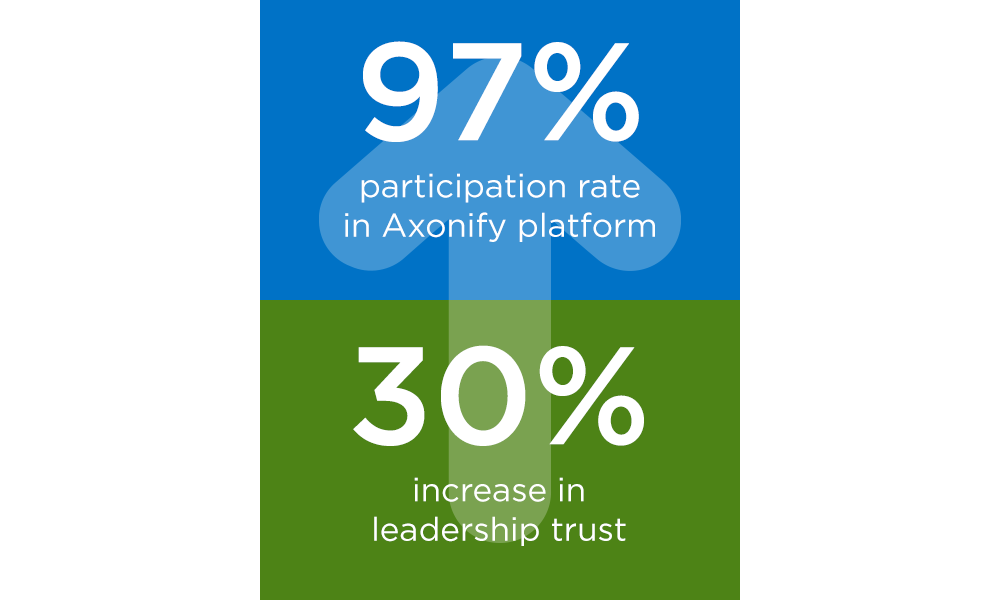7 communication challenges in the workplace (and how to fix them)

Clear, consistent workplace communication is essential to a productive, safe and engaging environment—especially for frontline organizations where teams are distributed, fast-moving and often deskless. But when communication problems go unresolved, it creates confusion, frustration and even burnout for team members.
According to the 2024 Deskless Report, only 47% of frontline employees say they receive timely communication from their employer. That means over half are still in the dark on critical updates, through no fault of their own. When people don’t know what’s going on, they can’t do their jobs safely or confidently.
Here are 7 signs of communication challenges in the workplace—and how to start addressing them.
1. People say, “I didn’t know”
When employees frequently say, “I didn’t know,” it’s often a sign of a breakdown in your internal communication strategy—not a failure on their part. Whether it’s a missed policy update, an unshared recognition, or an overlooked schedule change, these miscommunications add up and erode trust.
For frontline workers, the cost is even higher. They don’t have the luxury of checking email regularly or sitting in on meetings. If they miss critical updates, it can affect safety, service and operational efficiency.
Inconsistent or unclear communication can cause employees to disengage, question leadership decisions or stop trying to stay informed altogether. Effective workplace communication—especially real-time, mobile-friendly updates—helps share information when and where people need it most.
Taziki’s Mediterranean Café faced a tough challenge: Frontline employees struggled to keep up with constant changes, leading to costly “I didn’t know” moments. With Axonify Communications, they cut through the noise, delivering timely, mobile-friendly and easy-to-access updates right in the flow of work. This not only boosted information clarity but also helped build trust and confidence across their teams.
Want to see how your frontline can benefit from real-time, effective communication? Read Taziki’s story.
2. Messages don’t get through to everyone
If you’re relying on posters in the breakroom or emails to communicate time-sensitive or important updates, there’s a good chance your message isn’t reaching your entire workforce. And when messages only reach part of your team, it creates communication silos and fractures teamwork.
Different communication methods resonate with different audiences. In-person huddles work in some locations. Others may benefit more from instant messaging or mobile push notifications. And in hybrid work environments, it’s even more important to use communication tools that reach everyone, not just office-based staff.
Southeastern Grocers (SEG) faced the challenge of communicating quickly and clearly across 40,000+ employees spread over many locations. Traditional channels weren’t enough to reach everyone consistently, causing communication gaps and frustration. With Axonify, SEG moved beyond one-way broadcasts to tailored, trackable messaging that improved employee engagement and built stronger teamwork across their entire workforce.

Curious how you can connect every team member, no matter where they work? Explore SEG’s success story.
3. You rely too heavily on one communication channel
Using a single type of communication—like email, digital signage or word-of-mouth—can limit reach and lead to information overload or lack of communication. While each method has its place, no single channel is right for every message or every employee.
Effective communication requires meeting people where they are. That might mean combining written communication, face-to-face updates, and mobile push notifications. It also means understanding the nature of your message: policy changes may require more formal channels, while quick wins or recognitions can be shared via SMS or apps. Making those moments more meaningful is easier with lightweight tools like Recognition Pins—a simple way to celebrate great work right where it happens.
Using multiple communication styles also supports different learning preferences and language needs. Especially in frontline environments where language barriers, cultural differences or reading comprehension levels may affect clear communication, a multimodal approach helps reduce misinterpretation and communication barriers.
▶️ Also read: How to reach every single employee with your communications
4. Frontline managers are acting as go-betweens
When corporate messages funnel through frontline managers without additional support, it places a heavy burden on them to translate, tailor and deliver those updates effectively. While managers play a critical role in employee communication, they shouldn’t be the only channel.
This setup creates communication challenges when managers are left to interpret messaging without the full context or tools. It can also widen communication gaps between frontline and corporate teams, leading to misalignment.
Instead, give managers the communication tools they need to reinforce key messages and open up two-way communication. That way, they can focus on coaching and leading—not relaying updates.
At SEG, empowering store managers with mobile access to updates and task lists created a more structured communication flow, improving execution and reducing misunderstandings.
▶️ Related: How to improve team communication: A practical guide
5. There’s no easy way for employees to give feedback
Communication shouldn’t be one-way. If your company doesn’t offer regular, accessible ways for frontline employees to share ideas, ask questions or voice concerns, you’re missing opportunities to improve the work environment and make employees feel heard.
Whether it’s an open feedback form, a check-in question after a training session, or a direct reply to an announcement, building in active listening helps strengthen trust and boost employee morale. It also helps uncover communication problems before they become major operational issues.
▶️ Also read: How to improve communication skills training for employees
6. Your communication style doesn’t reflect your culture
If the tone or format of your company communications feels out of sync with your values, that disconnect can impact credibility and engagement. For instance, overly formal or top-down messaging can feel impersonal in a culture that values transparency or friendliness.
Think about your brand voice. Does it come through in your internal updates? Do you use open communication that invites dialogue—or only formal directives? Are you communicating in a way that’s inclusive, accessible and easy to act on?
▶️ Related: Bridging the gap: How targeted communication and reinforcement empower the frontline
7. You struggle to track what’s working
If you don’t have a way to measure how messages are performing or whether teams are taking action, your communication strategy might be less effective than you think.
Without analytics, it’s hard to spot communication issues—like low engagement on key updates, location-level inconsistencies, or breakdowns in decision-making. And without insights, it’s even harder to improve.
SEG tackled this by adopting digital communication tools that provided visibility into message delivery, read rates and frontline feedback. This data helped them fine-tune their strategy, close gaps and demonstrate the positive impact of better communication on execution and morale.
▶️ Also read: Internal communication strategy that actually works (+ template)
Communication challenges are fixable—with the right strategy and tools
Every missed message or moment of confusion on the frontline has real consequences. But it doesn’t have to stay that way. By identifying the signs of workplace communication problems early and building a strategy centered on clear communication, employee engagement and two-way dialogue, you can create an environment where your people feel supported, informed and ready to act.
Axonify gives frontline teams the right updates at the right time—on the right device—so no one’s left saying, “I didn’t know.” From real-time mobile messages to built-in feedback loops and actionable analytics, we help companies overcome communication barriers and connect with their teams in meaningful ways.
See how Axonify can help you turn communication challenges into a competitive advantage.